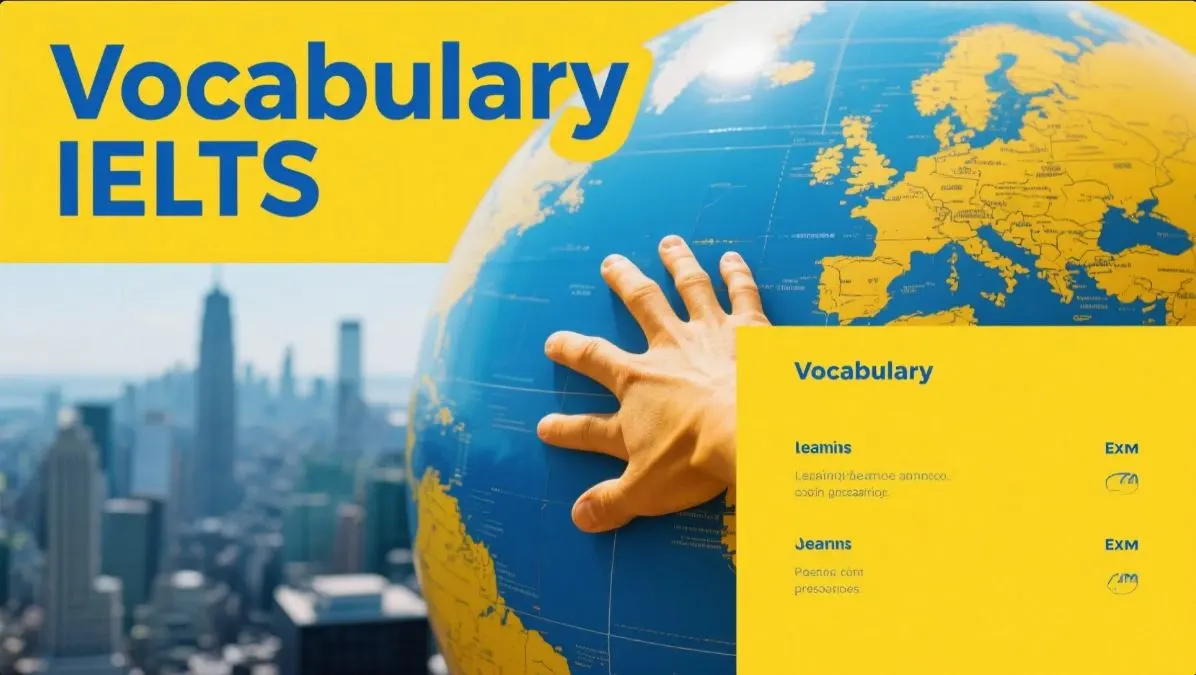Đề thi IELTS Reading có tiêu đề “The Impact of Tourism on Local Communities”
Nhớ đọc thêm các bài luyện thi IELTS nhé.
IELTS Reading: “The Impact of Tourism on Local Communities“
Tourism, as a global industry, has significant impacts on local communities, encompassing economic, social, cultural, and environmental dimensions. While it brings many benefits, such as increased revenue, job opportunities, and infrastructure development, the consequences can also be adverse if not managed sustainably. This essay examines the various ways in which tourism influences local communities, highlighting both the positive and negative effects.
Economic Impacts
One of the most immediate and visible effects of tourism on local communities is economic growth. Tourism is often a primary source of income for many regions, especially those rich in natural beauty, historical significance, or cultural heritage. When tourists visit a location, they spend money on accommodation, food, transport, and entertainment, directly contributing to the local economy. This influx of capital creates job opportunities, not only in tourism-related industries like hotels, restaurants, and travel agencies but also in other sectors that support tourism, such as construction and retail. Additionally, tourism can lead to the development of infrastructure, including better roads, airports, and public services, which can benefit both tourists and locals alike.
However, the economic benefits of tourism are not always equitably distributed. In some cases, the majority of profits are siphoned off by large, foreign-owned companies, leaving local businesses and workers with only a small share of the income generated. This phenomenon is often referred to as economic leakage. Moreover, tourism can lead to inflation, driving up the cost of living for local residents, particularly in areas where the demand for goods and services rises sharply during peak tourist seasons. Housing prices can soar, making it difficult for locals to afford homes in their own communities.
Social and Cultural Impacts
The interaction between tourists and local communities can lead to both positive and negative social and cultural changes. On the positive side, tourism can promote cross-cultural understanding and exchange. Locals have the opportunity to showcase their traditions, crafts, and ways of life, fostering a sense of pride and helping preserve cultural heritage. Cultural festivals, traditional performances, and handicraft markets often become focal points of tourism, allowing communities to maintain and even revitalize their cultural practices.
However, the influx of tourists can also lead to the commodification of culture, where traditions and customs are altered or oversimplified to cater to tourists’ tastes and expectations. This can result in the loss of authenticity, as cultural expressions are transformed into products for commercial consumption. In extreme cases, local communities may face social disruption, with increased crime rates, overcrowding, and tension between tourists and residents. Additionally, the erosion of traditional values and lifestyles due to the influence of foreign cultures is a concern, particularly in smaller, more isolated communities.
Environmental Impacts
Tourism has profound environmental impacts, which can be both positive and negative. On the positive side, tourism can drive the conservation of natural resources and heritage sites, as these become valuable assets for attracting visitors. Governments and local authorities may invest in the protection and preservation of natural parks, wildlife, and historic buildings, recognizing their importance for sustainable tourism.
Nevertheless, mass tourism can lead to severe environmental degradation. Popular tourist destinations often suffer from pollution, waste accumulation, and habitat destruction. Overcrowding in sensitive ecosystems, such as beaches, forests, and coral reefs, can result in significant damage to biodiversity. Additionally, the construction of large-scale resorts, hotels, and infrastructure projects can lead to deforestation, soil erosion, and water depletion. The environmental footprint of tourism is further exacerbated by the carbon emissions from air travel, which contribute to climate change. If not properly managed, the environmental costs of tourism can far outweigh its benefits.
Balancing the Impacts: Towards Sustainable Tourism
To mitigate the negative impacts of tourism while maximizing its benefits, there is a growing emphasis on sustainable tourism practices. Sustainable tourism seeks to strike a balance between the needs of tourists, local communities, and the environment. This involves planning and regulation to control the number of visitors, promote responsible behavior, and ensure that tourism development is aligned with the long-term interests of local communities. Ecotourism, which focuses on responsible travel to natural areas, is one example of how tourism can be harnessed for conservation while providing economic benefits to local communities.
In conclusion, tourism has the potential to bring substantial economic, social, and cultural benefits to local communities. However, without careful management, it can also lead to significant negative consequences, including economic disparity, cultural erosion, and environmental degradation. Striking a balance through sustainable tourism practices is essential to ensure that tourism remains a force for good, providing prosperity and development without compromising the integrity of local communities and their environments.
In conclusion, education is a cornerstone of economic development, driving productivity, fostering innovation, reducing poverty, and promoting inclusive growth. The benefits of education extend beyond individual advancement, contributing to the broader socio-economic progress of nations. However, to fully harness the potential of education in driving economic development, it is essential to focus on improving the quality, relevance, and accessibility of educational systems. By investing in education that aligns with the evolving needs of the economy and society, countries can pave the way for sustainable and inclusive economic growth in the years to come.
Đề bài thi IELTS Reading
1. Multiple Choice Questions (MCQs)
- What is the primary focus of the passage?
- A. Economic benefits of tourism
- B. Cultural exchanges in tourism
- C. The environmental costs of tourism
- D. The overall impact of tourism on local communities
- Which of the following is a positive economic impact of tourism mentioned in the passage?
- A. Increased inflation
- B. Job opportunities
- C. Economic leakage
- D. Housing price increase
- How does tourism contribute to cultural preservation?
- A. By altering traditional customs
- B. By showcasing cultural practices to tourists
- C. By simplifying cultural expressions
- D. By erasing local traditions
- What is an example of environmental damage caused by tourism mentioned in the passage?
- A. Improved public services
- B. Conservation of natural parks
- C. Pollution and habitat destruction
- D. Revitalization of cultural practices
- What is the passage’s view on ecotourism?
- A. It is harmful to local communities
- B. It can help balance economic benefits and conservation
- C. It focuses mainly on luxury resorts
- D. It accelerates cultural erosion
- Which statement best summarizes the environmental challenges of tourism?
- A. Tourism has no significant impact on the environment.
- B. Overcrowding in tourist spots helps preserve biodiversity.
- C. Infrastructure development can lead to habitat destruction.
- D. Tourism reduces carbon emissions.
- Which sector benefits most from tourism according to the passage?
- A. Healthcare
- B. Education
- C. Travel agencies
- D. Agriculture
2. True/False/Not Given
- Tourism always leads to equitable economic benefits for local communities.
- True
- False
- Not Given
- Tourism can lead to inflation in tourist areas.
- True
- False
- Not Given
- The passage mentions that all cultural festivals are commercialized due to tourism.
- True
- False
- Not Given
- The environmental impact of tourism is mainly positive.
- True
- False
- Not Given
- Sustainable tourism practices focus only on environmental conservation.
- True
- False
- Not Given
3. Yes/No/Not Given
- The author believes that economic leakage is a significant drawback of tourism.
- Yes
- No
- Not Given
- The passage suggests that tourists contribute to preserving cultural authenticity.
- Yes
- No
- Not Given
- The author agrees that tourism should be banned in sensitive ecosystems.
- Yes
- No
- Not Given
- The passage supports the idea that responsible tourism is essential for long-term sustainability.
- Yes
- No
- Not Given
- The passage argues that tourism is the main cause of climate change.
- Yes
- No
- Not Given
4. Matching Information
- Match each statement with the section it is found in:
- Economic Impacts
- Social and Cultural Impacts
- Environmental Impacts
- Sustainable Tourism
Statements:
- a. Tourism can lead to inflation.
- b. Tourism helps in revitalizing cultural practices.
- c. Tourism results in pollution and overcrowding.
- d. Ecotourism focuses on balancing economic and environmental benefits.
5. Matching Headings
- Match the following headings to the appropriate paragraphs:
- Negative economic consequences of tourism
- How tourism can preserve culture
- Environmental threats caused by tourism
- The role of sustainable tourism
Paragraphs:
- A: Economic Impacts
- B: Social and Cultural Impacts
- C: Environmental Impacts
- D: Balancing the Impacts: Towards Sustainable Tourism
6. Matching Sentence Endings
- Tourism can increase local revenue by…
- A. driving up the cost of living.
- B. attracting foreign investment.
- C. boosting sales in local businesses.
- D. decreasing economic leakage.
- Cultural festivals can benefit from tourism by…
- A. simplifying traditions for tourists.
- B. preserving traditional crafts.
- C. erasing local customs.
- D. commercializing local culture.
- Environmental conservation efforts are supported by tourism when…
- A. natural parks become major attractions.
- B. deforestation increases for new resorts.
- C. tourism leads to overcrowding.
- D. pollution is not controlled.
7. Sentence Completion
- The passage states that one positive outcome of tourism is the creation of ___.
- (Answer: job opportunities)
- A major problem with economic benefits of tourism is ___.
- (Answer: economic leakage)
- Tourism can lead to cultural erosion when ___.
- (Answer: local traditions are commodified)
- In some cases, the environmental footprint of tourism is worsened by ___.
- (Answer: carbon emissions from air travel)
- Ecotourism is a practice that aims to balance ___.
- (Answer: economic and environmental interests)
8. Summary Completion
Complete the summary using words from the passage:
- Tourism is often seen as a key driver of economic growth in local communities, as it generates 1 and creates 2. However, it can also lead to challenges like 3 and rising housing costs. Socially, tourism encourages 4, but there is a risk of cultural 5 when traditions are altered to attract tourists. Environmentally, tourism can promote 6 but also cause 7 if not managed responsibly.
(Answers: 1. revenue, 2. jobs, 3. inflation, 4. cross-cultural exchange, 5. erosion, 6. conservation, 7. degradation)
9. Short Answer Questions
- What is economic leakage?
- How does tourism impact housing prices?
- What type of tourism helps balance economic and environmental interests?
- What cultural activity is often showcased to tourists?
- Name one environmental threat mentioned in the passage.
- What does sustainable tourism aim to achieve?
- How does tourism influence infrastructure development?
- What is one benefit of cross-cultural exchange in tourism?
10. Diagram Label Completion
- Label the stages in the diagram showing the impacts of tourism:
- Influx of tourists
- Increased spending
- Economic growth
- Cultural exchange
- Environmental concerns
- Need for sustainable practices
11. Matching Features
- Match the following impacts to the appropriate categories:
- a. Economic growth
- b. Cultural exchange
- c. Environmental degradation
- d. Conservation efforts
Categories:
- Positive impacts
- Negative impacts
12. Diagram Label Completion
- Complete the diagram showing the effects of tourism on local communities:
- Economic benefits (e.g., job creation)
- Social and cultural changes
- Environmental impact
- Sustainable solutions
13. Matching Sentence Endings
- Match the beginning of each sentence with the correct ending:
- A. Tourism can drive economic growth…
- i. through conservation efforts.
- ii. by increasing local revenue.
- iii. when cultural practices are commercialized.
- iv. only if it is managed sustainably.
Đáp án bài thi IELTS Reading
1. Multiple Choice Questions (MCQs)
- D. The overall impact of tourism on local communities
- B. Job opportunities
- B. By showcasing cultural practices to tourists
- C. Pollution and habitat destruction
- B. It can help balance economic benefits and conservation
- C. Infrastructure development can lead to habitat destruction
- C. Travel agencies
2. True/False/Not Given
- False. Tourism always leads to equitable economic benefits for local communities.
- True. Tourism can lead to inflation in tourist areas.
- Not Given. The passage mentions that all cultural festivals are commercialized due to tourism.
- False. The environmental impact of tourism is mainly positive.
- False. Sustainable tourism practices focus only on environmental conservation.
3. Yes/No/Not Given
- Yes. The author believes that economic leakage is a significant drawback of tourism.
- Yes. The passage suggests that tourists contribute to preserving cultural authenticity.
- Not Given. The author agrees that tourism should be banned in sensitive ecosystems.
- Yes. The passage supports the idea that responsible tourism is essential for long-term sustainability.
- No. The passage argues that tourism is the main cause of climate change.
4. Matching Information
- 1a, 2b, 3c, 4d
5. Matching Headings
- 1A, 2B, 3C, 4D
6. Matching Sentence Endings
- C. boosting sales in local businesses.
- B. preserving traditional crafts.
- A. natural parks become major attractions.
7. Sentence Completion
- job opportunities
- economic leakage
- local traditions are commodified
- carbon emissions from air travel
- economic and environmental interests
8. Summary Completion
- revenue
- jobs
- inflation
- cross-cultural exchange
- erosion
- conservation
- degradation
9. Short Answer Questions
- Economic leakage refers to the outflow of revenue from the local community to external sources.
- Tourism can cause housing prices to rise due to increased demand.
- Ecotourism helps balance economic and environmental interests.
- Traditional cultural performances are often showcased to tourists.
- Pollution is one environmental threat mentioned.
- Sustainable tourism aims to balance growth with environmental preservation.
- Tourism often requires infrastructure development like roads and hotels.
- Cross-cultural exchange fosters understanding between tourists and locals.
10. Diagram Label Completion
- Influx of tourists
- Increased spending
- Economic growth
- Cultural exchange
- Environmental concerns
- Need for sustainable practices
11. Matching Features
- Positive impacts: a, b, d
- Negative impacts: c
12. Diagram Label Completion
- Economic benefits (e.g., job creation)
- Social and cultural changes
- Environmental impact
- Sustainable solutions
13. Matching Sentence Endings
- A-ii (Tourism can drive economic growth by increasing local revenue.)
Luyện tập bài khác ở bài viết:”100 bài luyện IELTS Reading 2024 – 2025“















